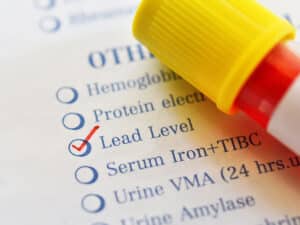On Aug. 18, the Occupational Safety and Health Administration (OSHA) released an Advanced Notice of Proposed Rulemaking (ANPRM) to review its standards for occupational lead exposure in construction and general industry, extending the comment period deadline by two months.
While the original comment deadline was Aug. 28, it was argued that, due to the breadth and complexity of the technical issues involved in this American Conference of Governmental Industrial Hygienists, the Environmental Protection Agency (EPA), and the Association of Occupational and Environmental Clinics (ANPRM), more time is needed to gather information and coordinate responses from members of the organization in order to deliver a comprehensive response.
Why does OSHA want feedback?
This extension isn’t unprecedented. In fact, in 2021 the administration extended the comment period for the COVID-19 healthcare emergency temporary standard.
OSHA uses comment periods to collect more information on proposed standards and changes, while also allowing stakeholders sufficient time for review.
In the case of lead exposure, OSHA seeks public comments on:
- Blood lead level triggers for medical removal protection,
- medical surveillance provisions, including triggers and frequency of blood lead monitoring
- permissible exposure limit, and
- ancillary provisions for personal protective equipment, housekeeping, hygiene and training.
The ANPRM will further gather information on employers’ current practices that address workplace lead exposure, associated costs, and other areas of interest.
What is lead and how are workers exposed?
Lead is a, malleable, bluish-gray heavy metal that occurs naturally in the Earth’s crust.
It is used in the manufacture of items such as ammunition, surface coatings, lead acid batteries, and solder. Lead was one of the very first metals used by humans and, consequently, it was the cause of the first recorded occupational disease – lead colic in a 4th century BC metal worker.
Workers could be exposed to lead as a result of the production, use, maintenance, recycling, and disposal of lead material and products. Lead exposure happens in most industry sectors, such as:
- construction,
- manufacturing,
- wholesale trade,
- transportation,
- remediation,
- and even recreation.
Today, many adults are mainly exposed to lead by breathing in lead-containing dust and fumes at their workplace, or from other non-work related activities that involve lead. The metal then passes through the lungs into the blood where it can harm many of the body’s organs.
While inorganic lead does not readily enter the body through skin, it can enter the body through accidental ingestion — eating, drinking, and smoking — via contaminated hands, clothing, and surfaces. Additionally, lead that cannot be readily excreted from the body is stored in the bone marrow.
Workers may develop a number of diseases through workplace lead exposure, such as neurological effects, gastrointestinal effects, anemia, erectile dysfunction and kidney disease. Pregnant women need to be more concerned with reducing their blood lead level since this can have serious impact on the developing fetus.
As with any harmful substance used in the workplace, employers must use caution and provide some level of safety and care, which is where OSHA’s lead standard — 1910.1025 00 comes into play.
Lead was one of the very first metals used by humans and consequently, it was the cause of the first recorded occupational disease.

What are the existing laws and regulations?
In the current lead exposure standard, OSHA’s BLL for medical removal is 60 micrograms per deciliter or more for general industry, and 50 micrograms per deciliter or more in construction. The return-to-work BLL is less than 40 micrograms per deciliter.
Related Article: Tampa smelter faces $320K in OSHA fines for lead exposure
OSHA adopted these standards on for general industry in 1978, and for construction in 1992. Since then, studies by the ANPRM, and the Association of Occupational and Environmental Clinics have suggested that negative health effects can occur at lower blood lead levels than the current standard.
“BLLs as low as 5 μg/dL have been associated with impaired kidney and reproductive function, high blood pressure, and cognitive effects attributed to prenatal exposure,” the ANPRM stated.
“Poorer performance on neurocognitive and neuropsychologic assessments were observed in adults with BLLs as low as 5-19 μg/dL compared with adults with BLLs below 5 μg/dL.”
Congress has passed a number of laws related to lead exposure. These laws address lead in paint, dust ,and soil; lead in the air; lead in water; and disposal of lead waste. EPA helps to regulate lead contamination and the resulting hazards by both issuing and enforcing regulations, and by educating the regulated community with policy and guidance documents.
Some laws and executive orders created by the EPA for lead exposure include:
- Toxic Substances Control Act (TSCA),
- Residential Lead-Based Paint Hazard Reduction Act of 1992 (Title X),
- Clean Air Act (CAA),
- Clean Water Act (CWA),
- Safe Drinking Water Act (SDWA),
- Resource Conservation and Recovery Act (RCRA), and
- Comprehensive Environmental Response, Compensation, and Liability Act (CERCLA)
Some state agencies have already revised their standards on lead exposure. For example, Michigan OSHA revised its standards for general industry and construction in 2018.
Other states, including Washington and California have begun the process to update standards.
What’s next?
If you’re interested in submitting a comment, you may do so electronically at https://www.regulations.gov/.
Once submitted, comments will be made publicly available online, thus OSHA suggests exercising caution when submitting information that you may not want made available to the public.
Comments must be received by Oct. 28, 2022.
To inquire about on-site BLL testing or to schedule it for your team, just complete the form below or contact us at 1-844-622-8633.
***
About Worksite Medical
In most cases, OSHA requires medical surveillance testing, and at no cost to employees.
Worksite Medical makes that program easier with mobile medical testing.
We conduct on-site respirator fit tests, as well as audiometric exams, pulmonary function tests and heavy metal lab work, right on your job site. We also keep accurate, easy-to-access medical records for your convenience. You’ll keep your employees at work, and stay ahead of OSHA inspections.




